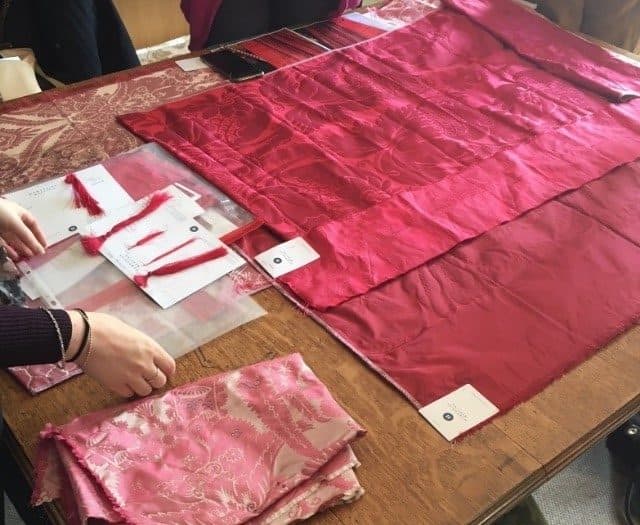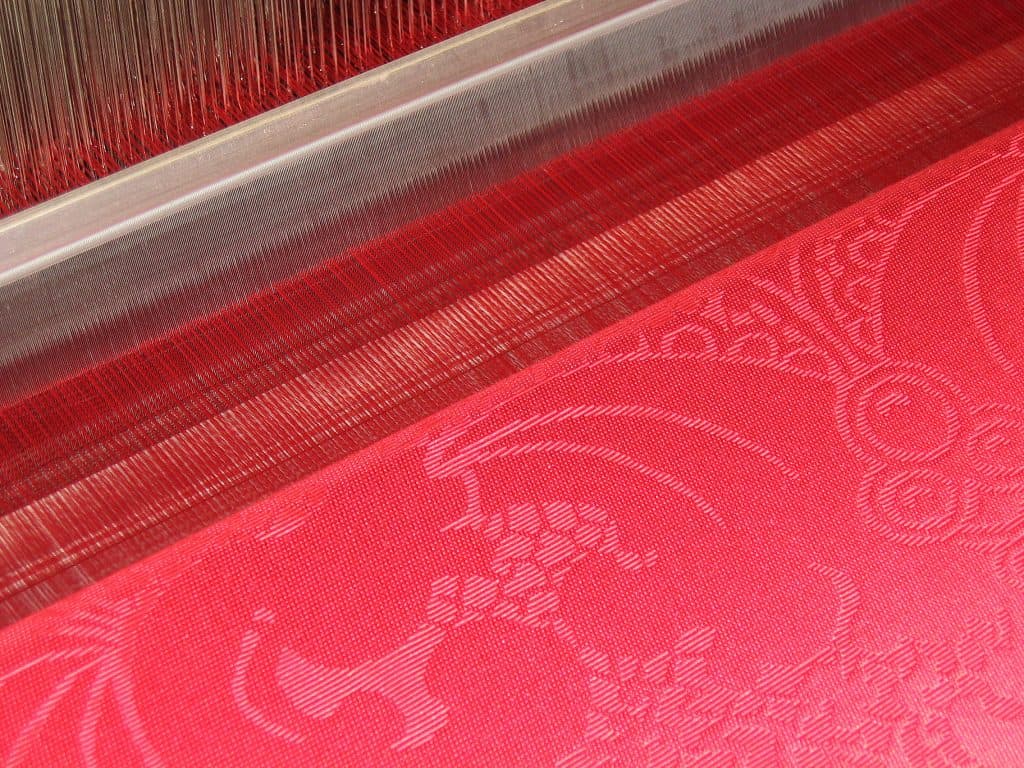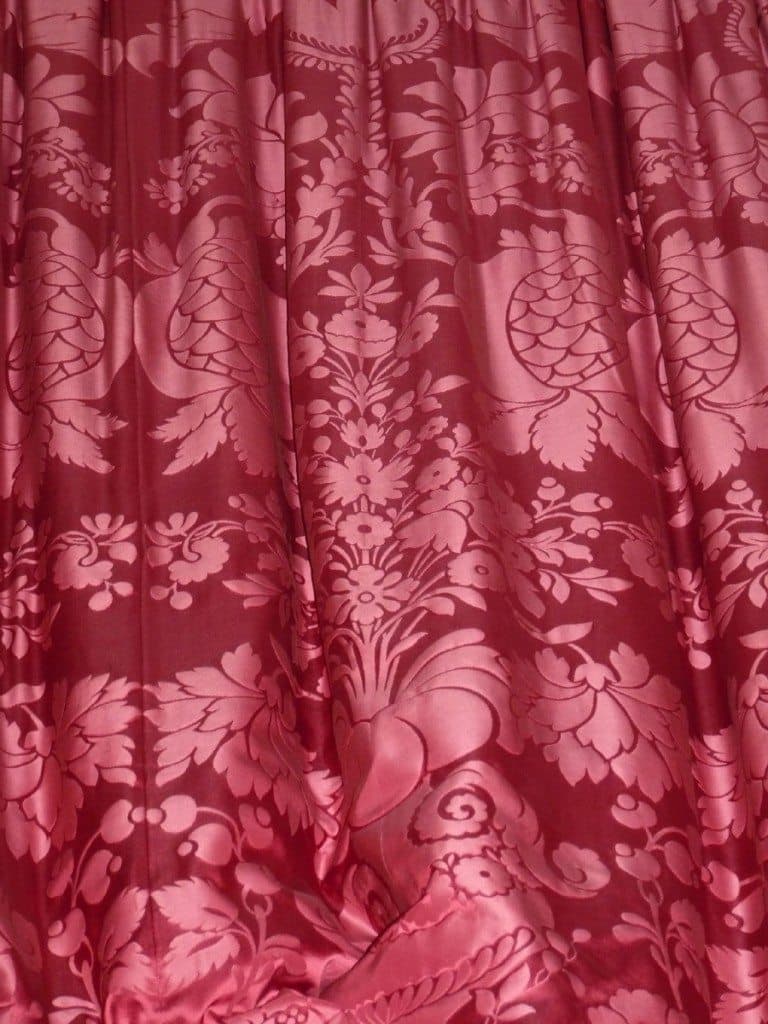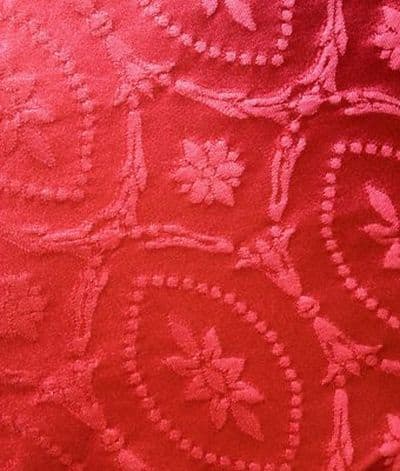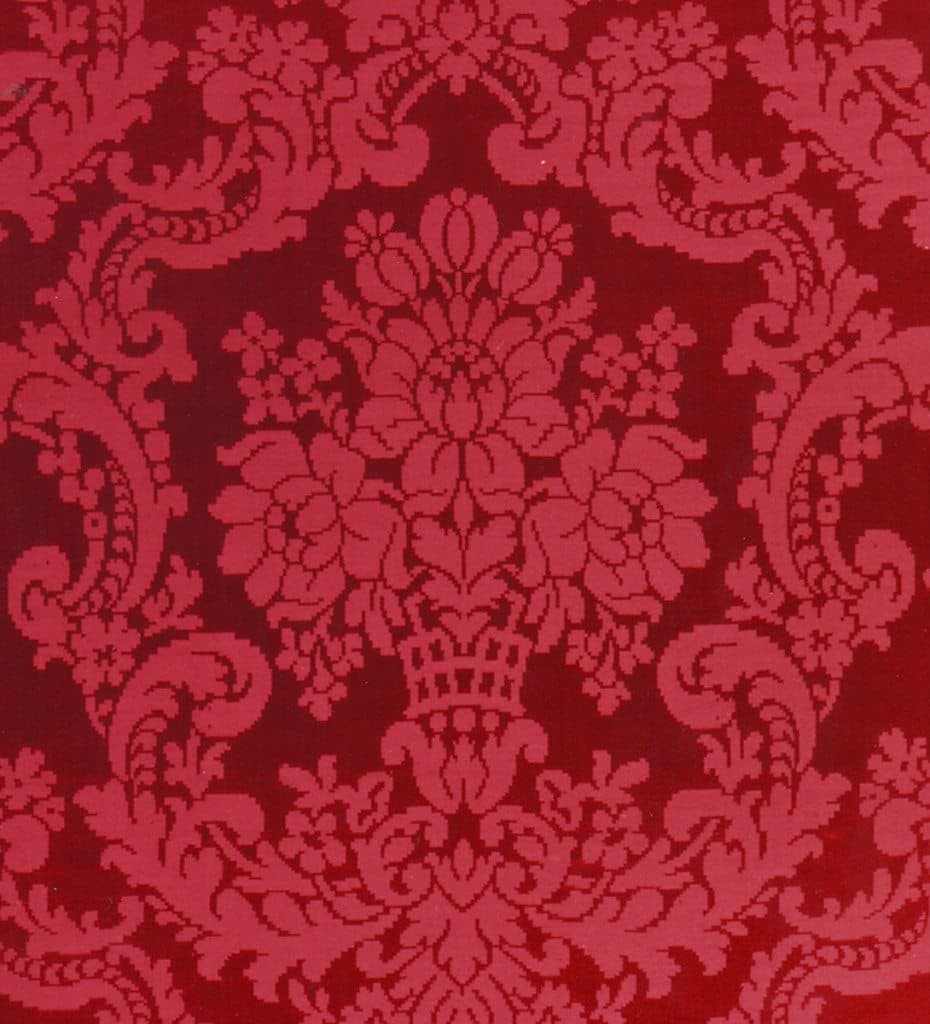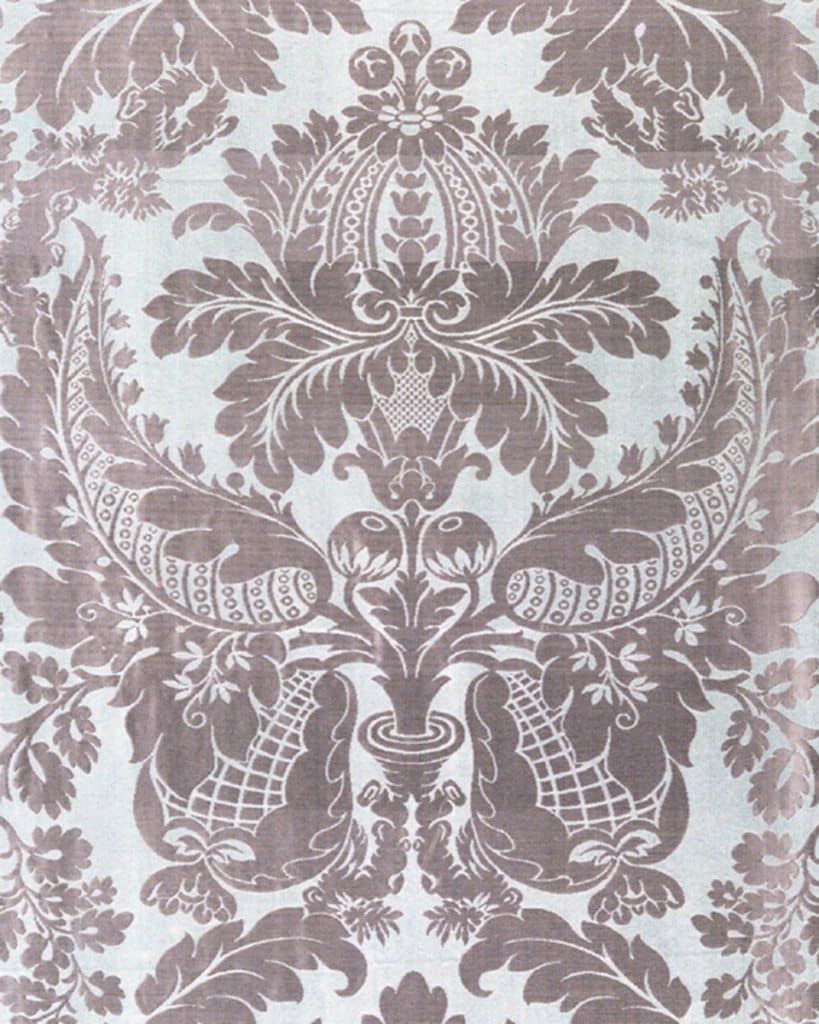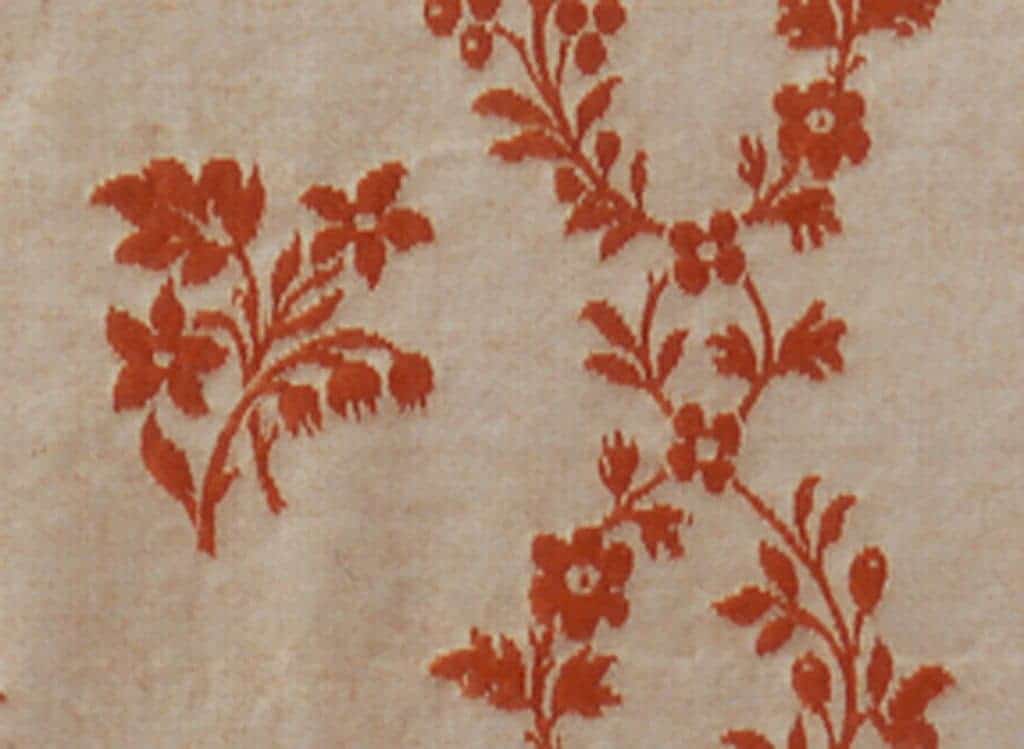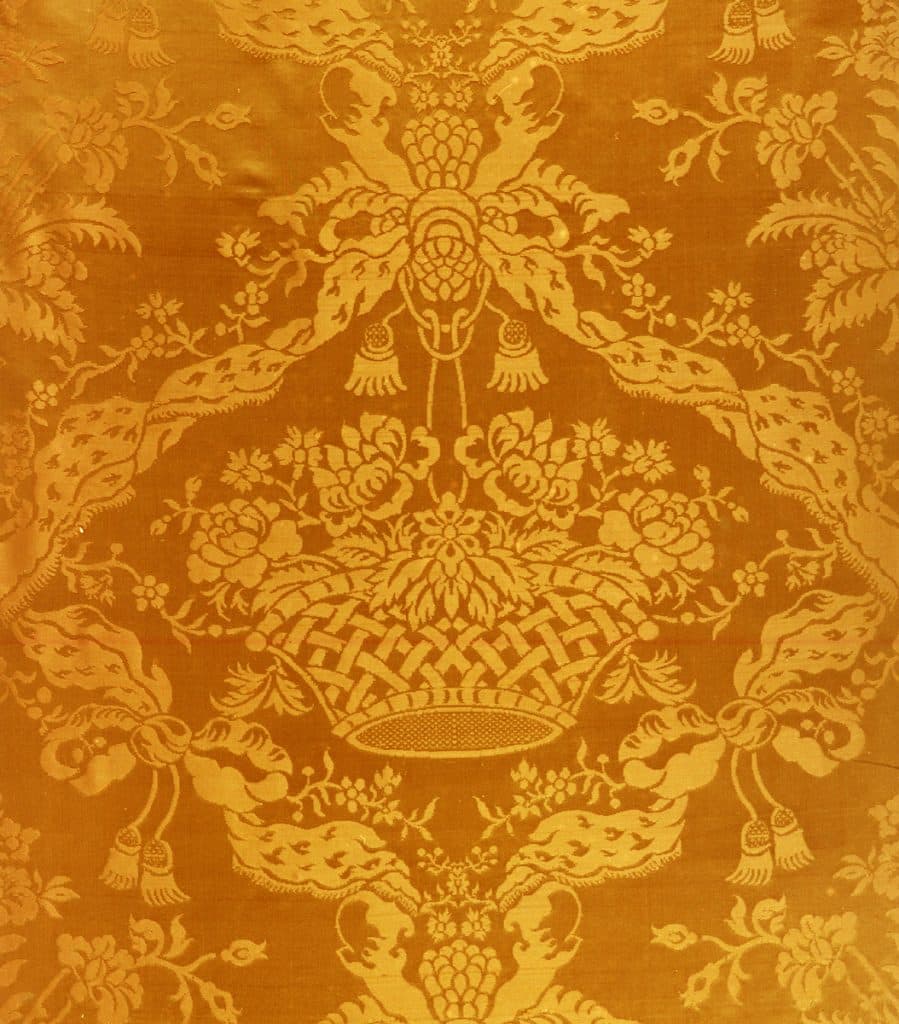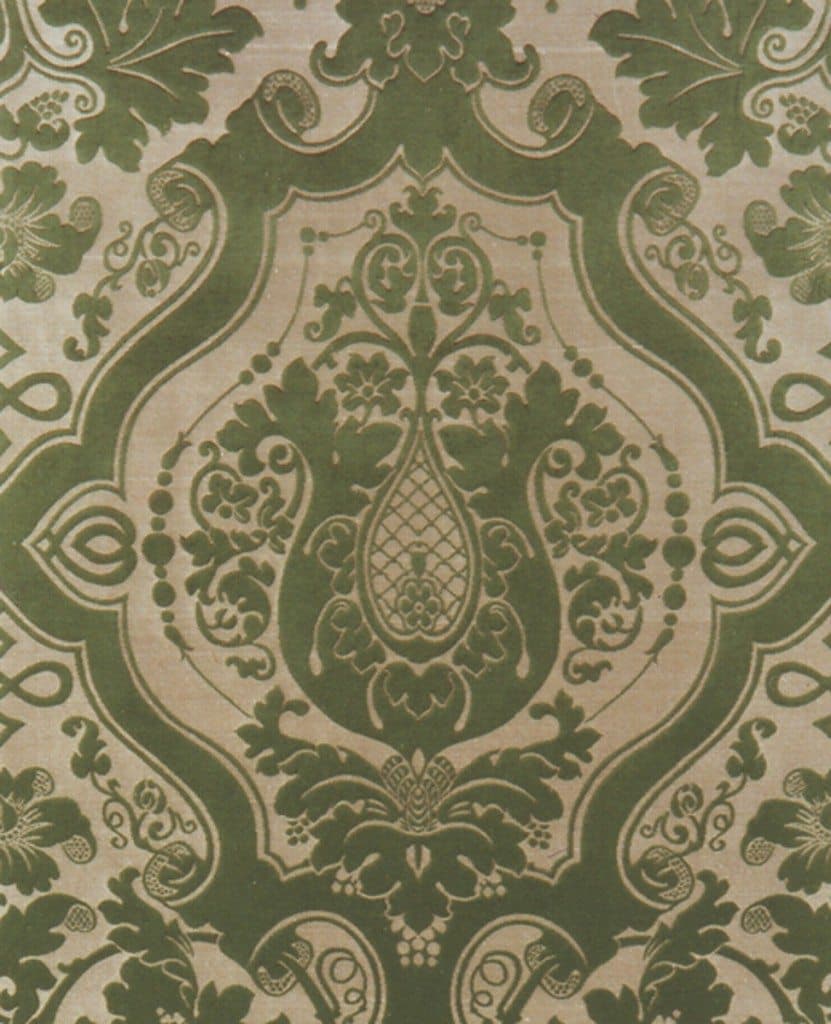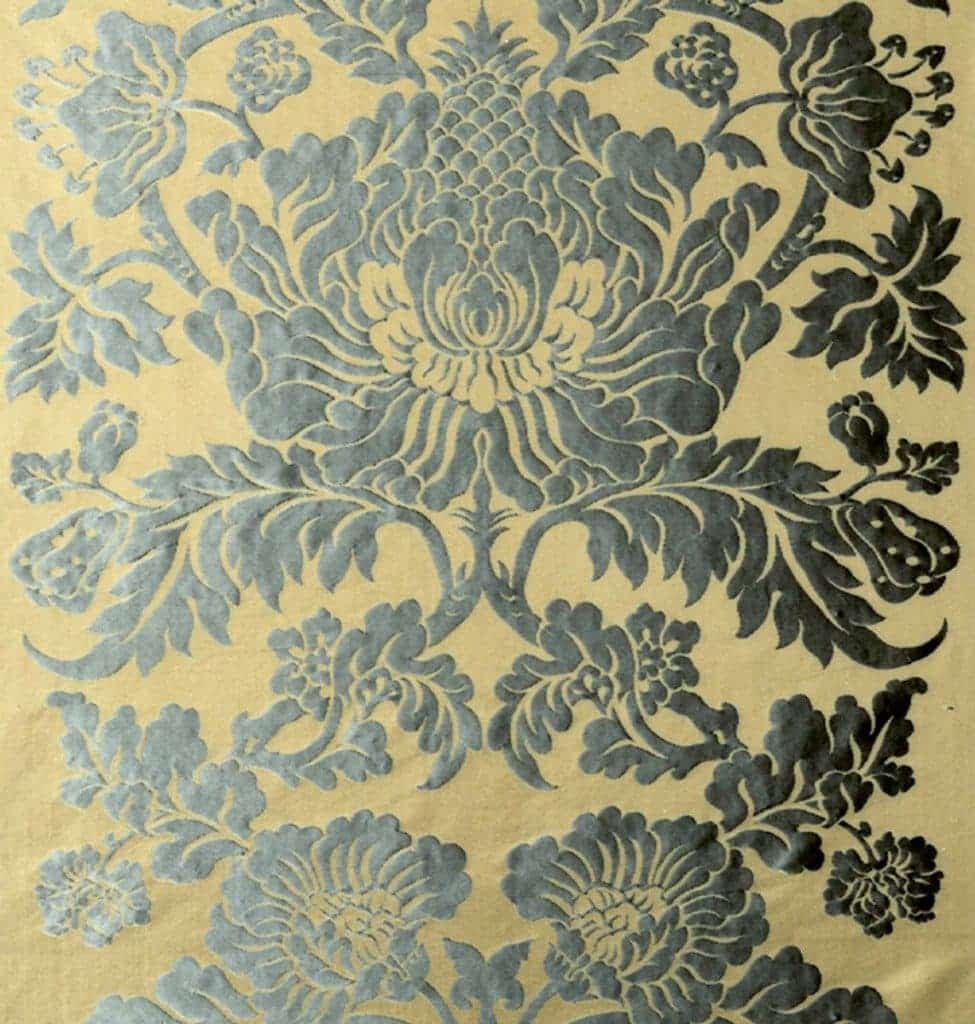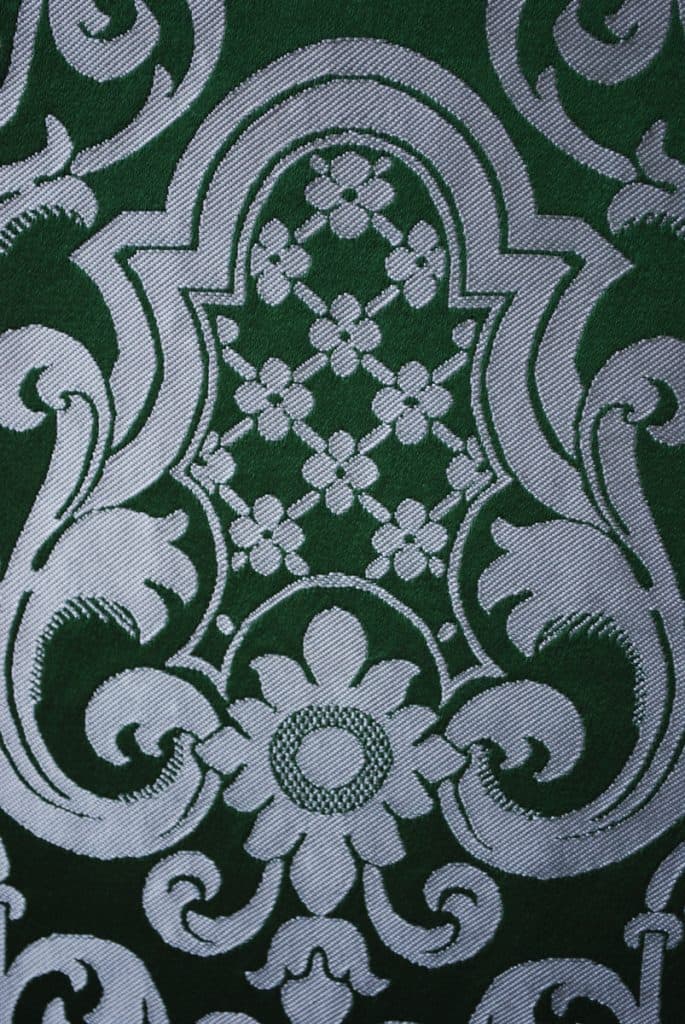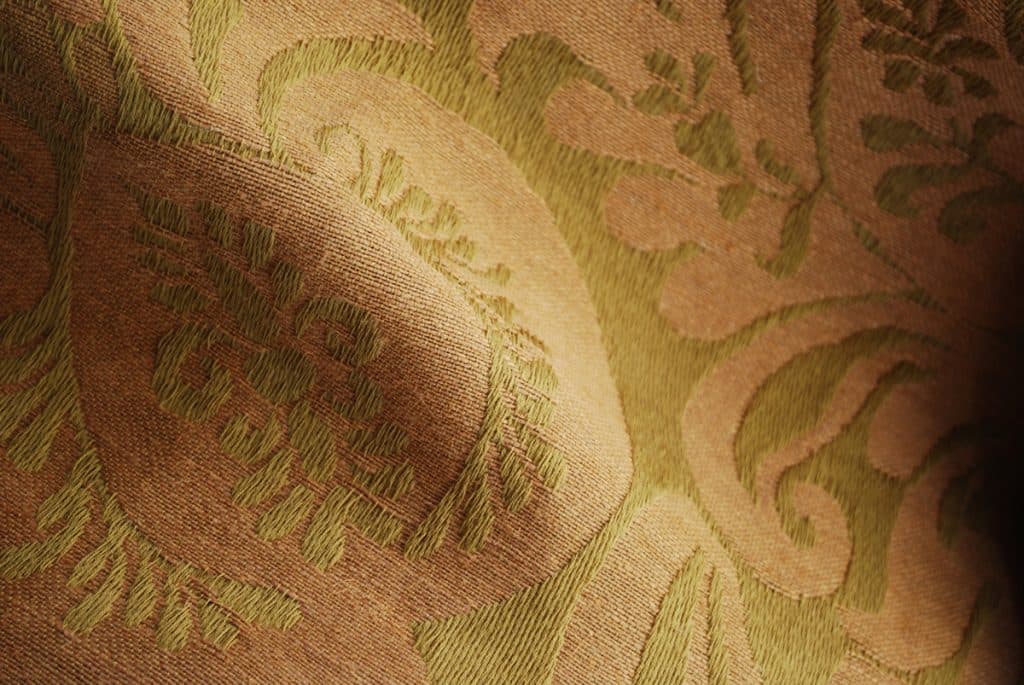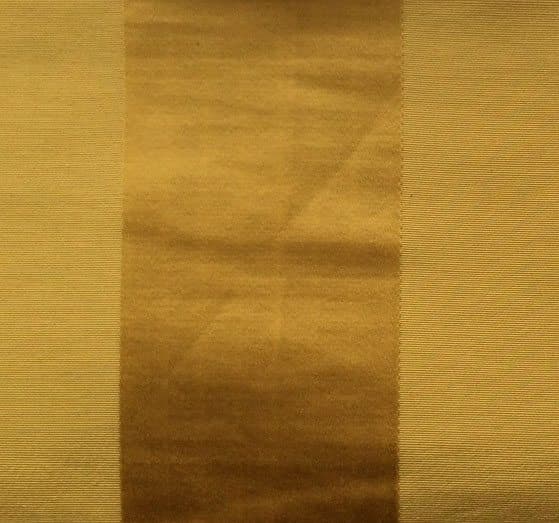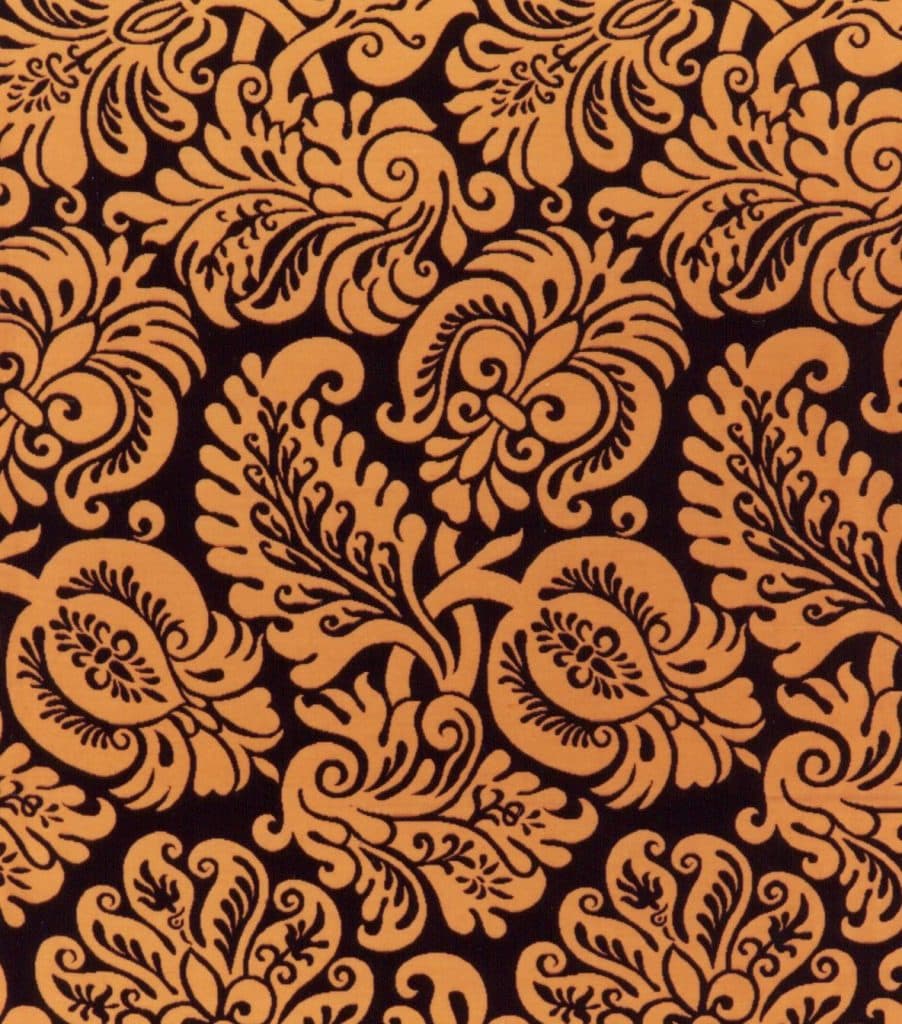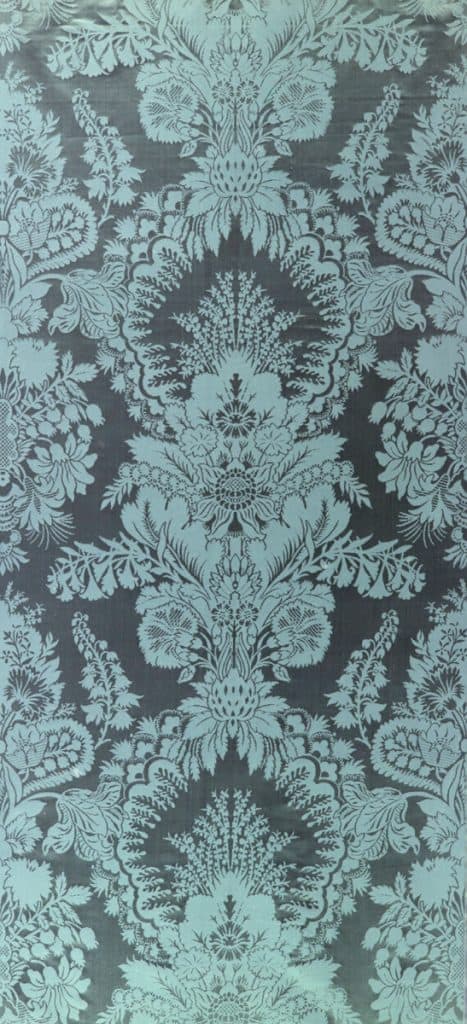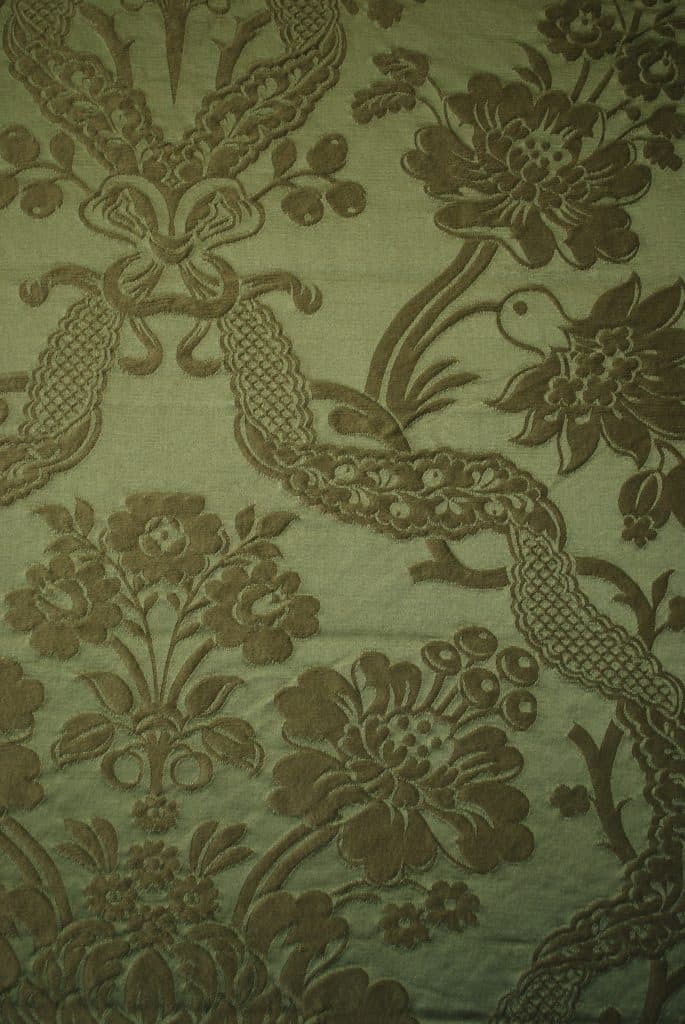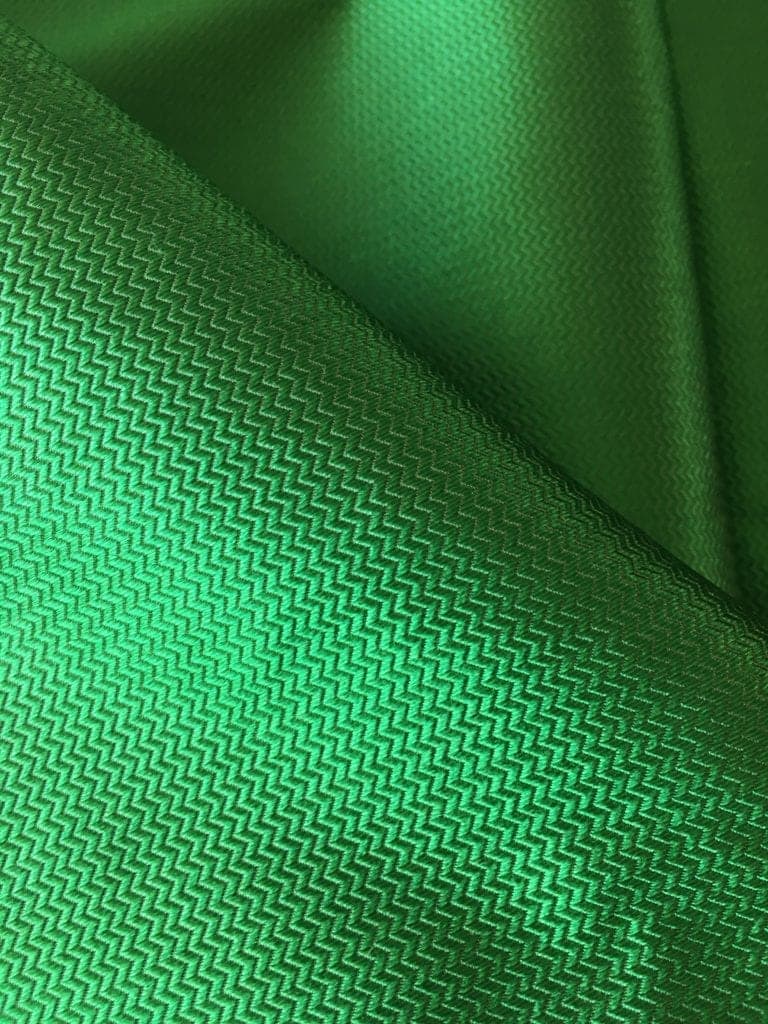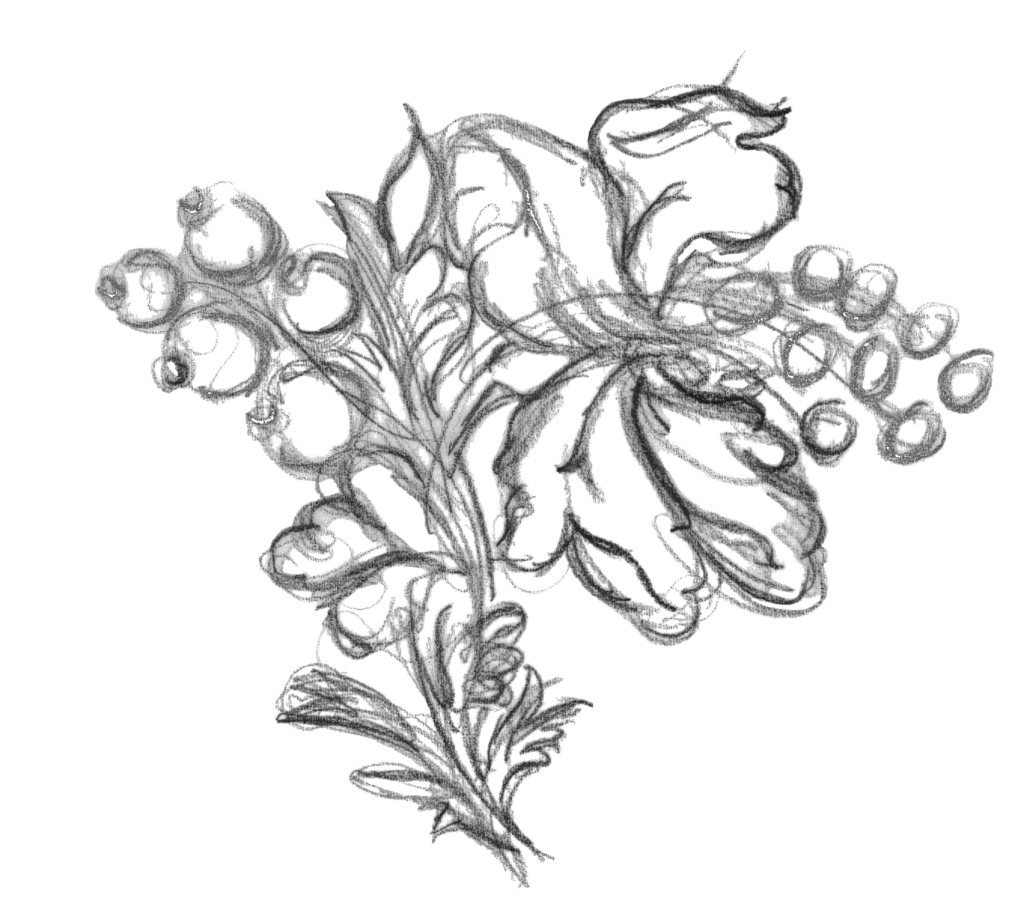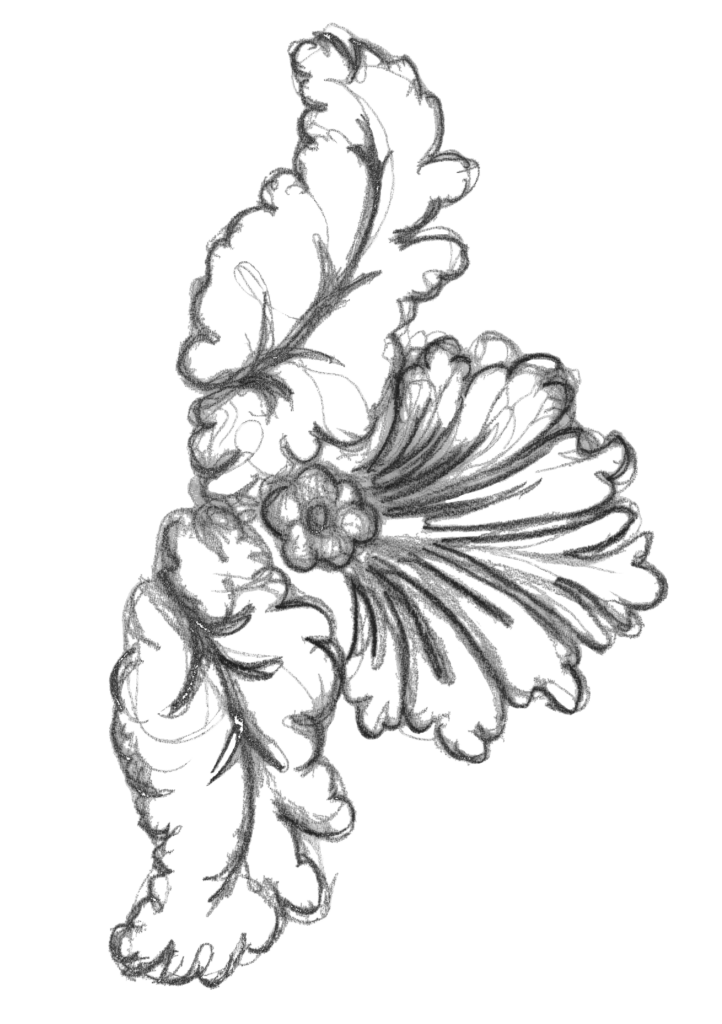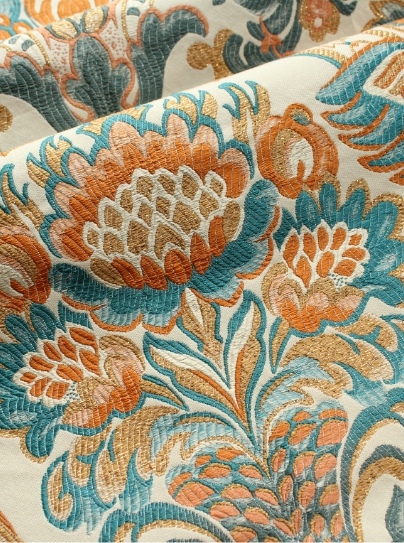In 2020 the National Trust celebrates its 125th year, here we look back on many of the heritage fabrics Humphries Weaving have been involved in recreating
The National Trust is an independent charity working to preserve places of historic interest or natural beauty within England, Wales & Northern Ireland. The Trust own over 500 heritage properties, which includes historic houses & gardens, industrial monuments and social history sites, throughout which they focus on the environmental and heritage conservation. Humphries Weaving have nearly 50 years of experience at restoring heritage fabrics, and the Trusts slogan of “Forever, For Everyone” is something that is close to our team’s hearts. We are all extremely passionate about bringing these fabrics and rooms back to life, and while historically these rooms were only used by the family of the house and their wealthy guests, these textiles have been made accessible for everyone through the Trust.
Whilst National Trust sites are currently closed their online accounts are active and sharing unique insights.
Among a wide variety of houses throughout the country one of the most famous restorations is Kedleston Hall in Derbyshire. This is one of the largest restoration projects we have collaborated with the Trust on, and we supplied heritage fabrics for several rooms. For the Drawing room, Library and Music room silk and wool damask was provided for walling and John Linnell guilt furniture. The final room of The Saloon includes complimentary silk and wool damask and linings in crimson used to cover the chairs.
Within the State Apartments the most prestigious part of the restoration is the State bed. This features narrow width pure silk damask in blue, which has also been used for walling, drapes and furnishings, re-creating the gold lace was undertaken by Heritage Trimmings Ltd of Derby, who painstakingly re-created the woven braid on historic machines, making by hand the fringe, bobbin lace and rosettes. You can read the full Country Life article surrounding the restoration here.
Felbrigg Hall, Norfolk
We frequently work with teams of talented curators, conservationists, external advisers and members of the trust to faithfully restore historic textiles to how they originally would have been created hundreds of years ago. These projects often involve a lot of academic research in order to create a cloth that is true to the original and our consultancy services are used to unveil the story of the fabric. We also relate to our extensive textiles archive when advising on projects, and use it to make informed decisions regarding the colour, design and weave constructions within the cloth.
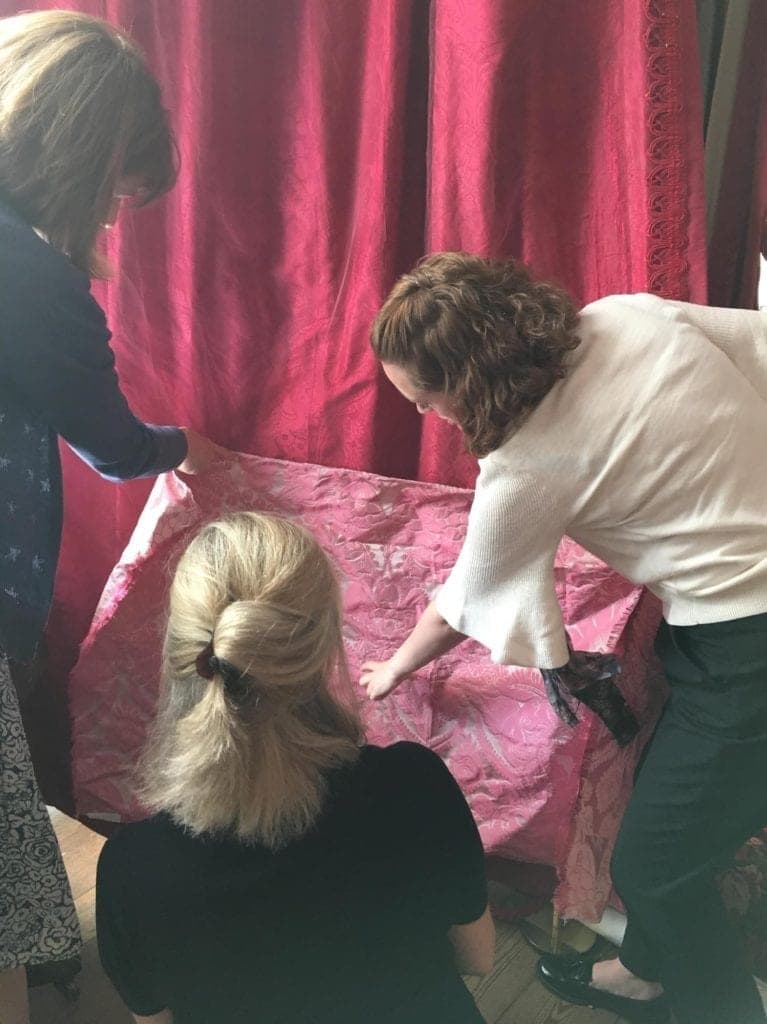
L-R Emma Slocombe and Melanie Leach (NT) and Natalie Jones (Humphries Weaving) reviewing design samples
When beginning a new project one of the first steps is often to visit the house and see the characteristics and period style of the room the fabric will eventually be situated in. We have recently had the pleasure of working with Fellbrigg Hall, and Natalie is recreating the silk damask curtains within the Cabinet Room. To obtain the pattern the large curtain was delivered to the Humphries Weaving office in Sudbury, Suffolk, and we were excited to see a design not currently held within the archive dated from c. 1830. The design was then traced by hand before using state-of-the-art modern technology to create the jacquard fabric design. Natalie then analysed the design against the original curtain and made lots of adjustments where shapes could be refined by less than a millimetre. Simultaneously she balanced the development of a custom crimson warp and weft from a small yarn extraction of the original curtain. After weeks of testing a bobbin trial was created to offer a section of the cloth true to the original colour, alongside the full scale repeat to show what the finished cloth would look like.
Colour development for the restoration of curtains at Felbrigg Hall
This was then presented to the team at the National Trust and the colours reviewed in both broad sunlight and a darkened room to simulate the environment the curtains will be housed in. The custom silk weaving will commence within our own Sudbury Silk Mills at the beginning of the year and we are all excited to see the upholstered curtains. These will by complimented by detailed passementerie and will be hung in their new home of Fellbrigg Hall for all to admire in coming years.
Kedleston Hall and Felbrigg Hall above are examples of the behind the scenes collaboration that goes into reinstating heritage fabrics for the National Trust and below is a list of all the properties where you can see our work on display;
Where is our fabric?
The original pure silk narrow width tissue used for curtain restoration in the Drawing room required 13,000 jacquard cards to be cut by Derek Chatten at DeVere Mill.
The restoration of upholstery in the Drawing Room included a silk satin striped fabric in blush pink salmon with moiré finished.
The bed hangings we restored form part of a English rococo masterpiece from the 1750’s.
Humphries weaving was involved in the restoration of a suite of Gillows furniture and commissioned to make a silk and linen satin stripe.
During the renovation works of The Red Drawing Room it was discovered that the red Taboret stripe that was on the walls was not in fact original to the room. Once delicately removed by expert conservators, the true red silk damask was unveiled and replaced.
This design was redrawn by the Humphries Weaving studio from remaining fragments of the original fabric found at the house.
The design is also featured at Osterly Park (National Trust) and Audley End (English Heritage) and another version is also held in the Warner Textile Archive.
The original documentation of the room featured a heavily glazed wool tammy in a pale orange which was used for linings and chair backs on the Peter the Great Room furniture which was faithfully reproduced in the exact shade.
The wallcoverings in the Saloon feature unique pure silk damask woven in marigold.
The design used for the bed drapes can also been seen at The Palace of Westminster and Chatsworth House.
Belton is regarded by many as the most complete example of an English Country House and interior collection surviving today, of which we have supplied fabric for 4 rooms.
It is understood from the house archive that the reredos was manufactured c. 1720 with the other silk decoration being a reproduction from 1908-1909.
Damask Window Drape Linings for the Oak Drawing Room are woven in gassed cotton with a heavy linen weft; the design was redrawn from a church document discovered by textile conservator May Berkouwer.
Unique striped taboret with moiré finish was used for window drapes.
This bold stripe in a self-colour vivid yellow in plain tabby and satin, relies on the contrast of weave structures alone between the plain and satin textures to create the status demanded by the design of the furniture.
Ham House was renowned as being one of the grandest Stuart Houses in England with a historic collection of textiles, furniture and paintings it is open for the public to visit today and absorb the atmosphere created over the course of the last 400 years.
Fabric for the re upholstery of a suite of Chippendale mahogany chairs can be seen in the large Dining Room.
Silk and wool narrow damask woven in pea green for the restoration of gilt chairs in the long gallery.
In the Dining Room you can see the fabric we supplied for the restoration of The Empire chairs from the Congress of Vienna, 1814.
The damask for The Queens Bed is a popular Italian design dated to the 1730’s, an original Flock wallpaper of the design can still be seen at Christchurch Mansion, Suffolk.
The Normanton Bed is covered with damask featuring an unusual crimson warp and contrasting aqua weft creates a shot effect in the figure.
The design was very similar to one existing in our archive but to achieve an exact match the Waddesdon design was redrawn in situ, from the original curtain. The colour match was also extremely sensitive to compliment both the picture gilding and the existing fabric within the room.
